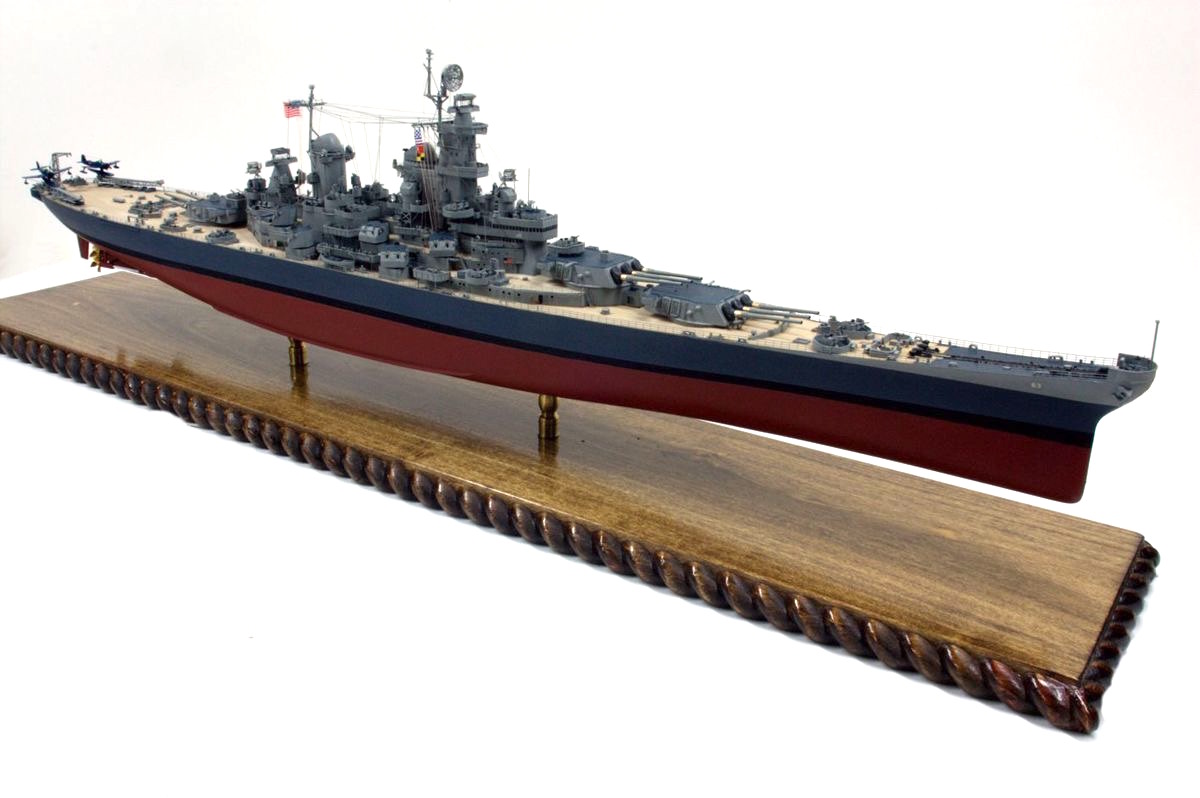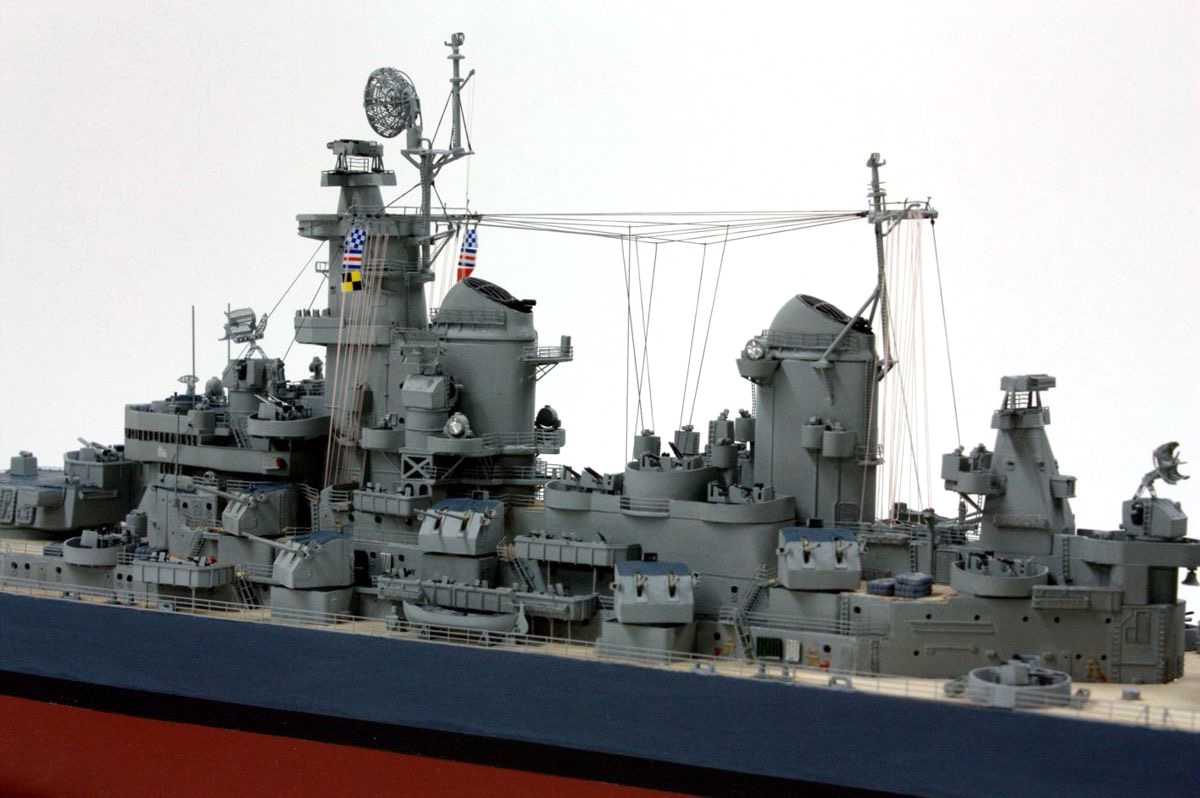I used Laser Decks wood decking for my Tamiya Missouri. I did not want to paint them deck blue. If I did, I wouldn't have used them. Instead, I picked a date where the decks were natural wood, but all the other armanment/radars were pretty much in WW2 condition. That particular date was between Sept and Oct 1945 after the Surrender on the way to Pearl when the sailors scraped the blue paint off the decks. The deck blue continued on all the non-wood horizontal surfaces.

The model uses mostly Eduard PE, but a word of warning. Eduard's PE is very accurate and the bend points are etched so it can only bend there. The normal thickness is 0.010", but is reduced to 0.005" at the etched bend points. Because of this, it breaks very, very easily. I had some of the more curvy pieces fall apart into three pieces making installation a total nightmare. It's also a bit brittle being half-hard brass. You can reduce the breakage by annealing it. You anneal it by heating with a torch until it briefly turns red. A word of caution, the annealed brass PE is very soft and defoms very easily. It's the reason they don't use the soft stuff to begin with.
Tom's Model Works does not etch the bends, but in their case some of the etching cross-sections are so fine as to be unusable. I recently (Wednesday) finished a Trumpeter Essex and used Gold Medal Models PE and was generally satisfied with it, but Eduards inclined ladders are more detailed. Tom's inclined ladders expect you to bend the steps (another nightmare...at least for me). I've used some Alliance Model Works products, but being Chinese, it's hard to get customer service if you have a problem. Both Eduard and GMM, their customer support is terrific!
There are other PE companies on the Market now including Fly Hawk and others which are producing very complex sets of PE for battleships. They are expensive and I have no experience with them. There is also a new product on the market that you should consider: 3D printed 20mm guns which are pristine, delicate and pretty accurate. They already have thin splinter shields and shoulder rests and will save you hours of screwing around with brass details too small to handle.
I've started using gel CA to hold PE. It seems counter-intuitive, but it gives you more working time, stays put, and lets you use very small droplets... in other words, it gives you control that thin CA doesn't. You can then harden it with a tooth pick dipped in accelerator.
For long railings, I use small pieces of Tamiya 4mm masking tape and tape the railng to the hull in enough spots to stabilize it. In this case I do use thin CA applied very sparingly on either side of the masked areas, but NOT touching the tape. You don't want to glue the tape to the ship! After I've tacked the railing and it's nice and straight, I start removing the tape and glue each area that's now exposed. In this way you get a nice railing and don't drive yourself crazy.
I used MicroMark Pressure Sensitive Adhesive (PSA) to hold the wood decks, but it did occassionally let go and I had to inject more strong cements to keep it down. Gluing wood to styrene is not an ideal situation.
I've developed ways to solder all my PE antennas to mast and have even resorted to making all the masts and yards out of soldered brass. I do not expect most modelers to go this route. I'm good at soldering and have some pretty sophisticated equipment with which to do it. It does make very stable assemblies which hold up nicely for a long time.
There are lots of other details you can add to a battleship that really set it off. Most overhanging gun tubs have poles supporting them. These can be made with 0.021" brass wire. Masts are often stayed with guy wires. I did these using High-E guitar strings held iwith J-B Weld epoxy. Don't cut guitar strings with your sprue cutting flush cutters. It's hard than the pliers and will leave little half circles on both blades ruining the pliers. You need a plier that has a hardened cutter designed for this use. I did find that my Channel Lock needle nose pliers that have a cutter are hard enough to cut hardened piano wire.

All rigging is done with fine-gauge E-Z Line. It is Lycra fiber and is totally elastic. It glues instantly with any kind of CA, and if you bump it, it just moves out of the way. It holds its tension forever. My Missouri is now 6 years old and shows no deterioration whatsoever.
Good Luck. If you have any more questions, I'd be glad to field them via private message.